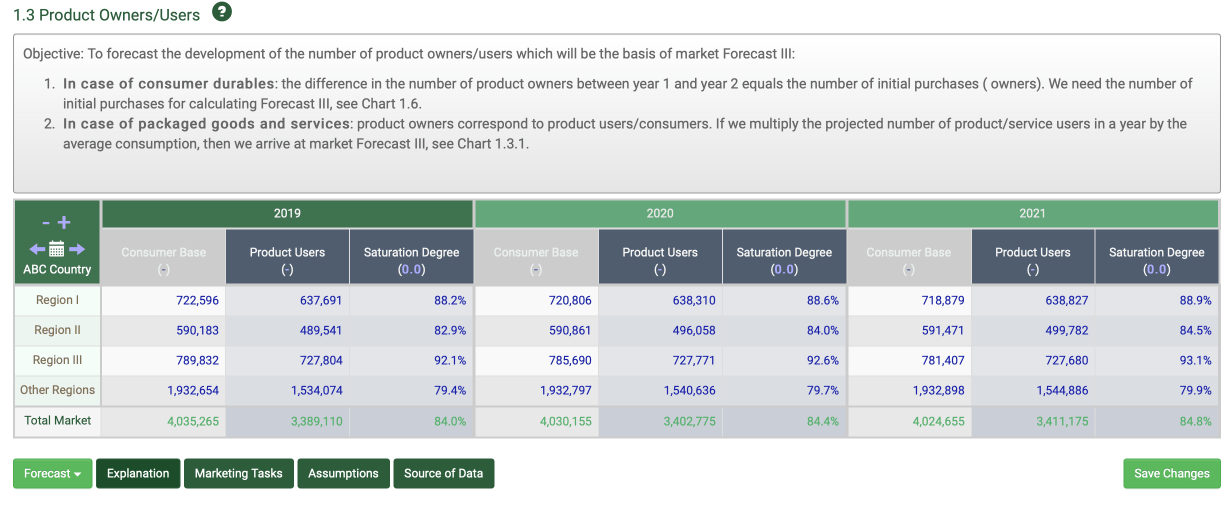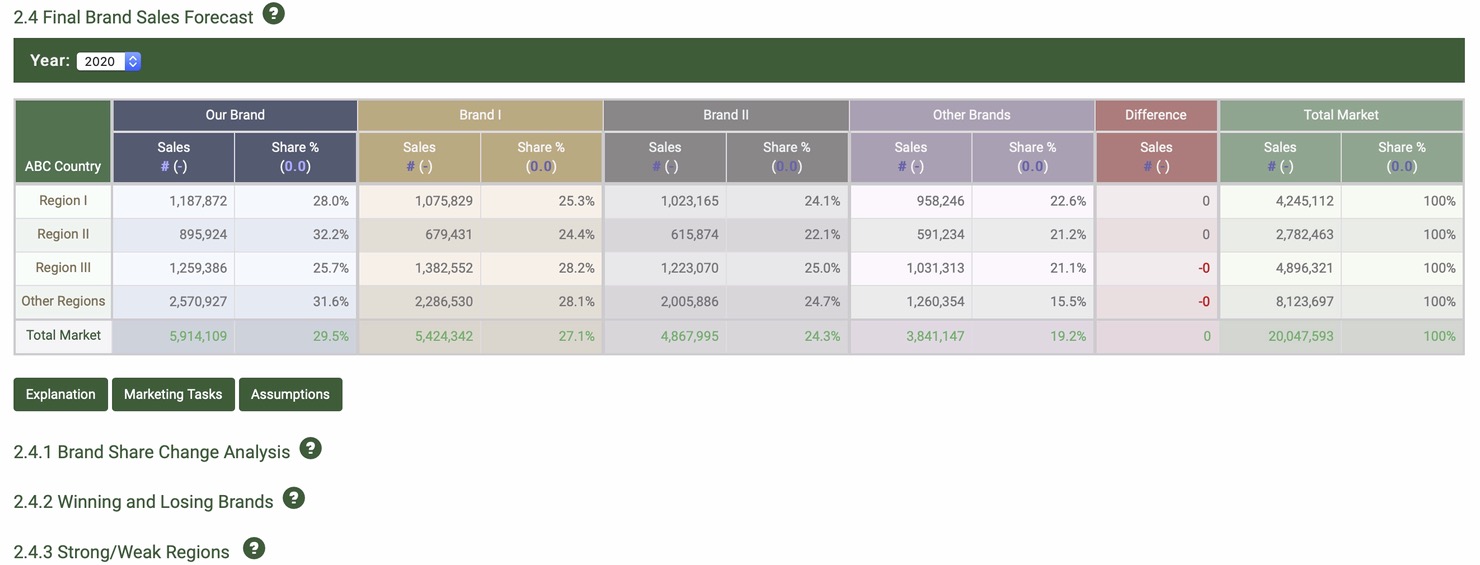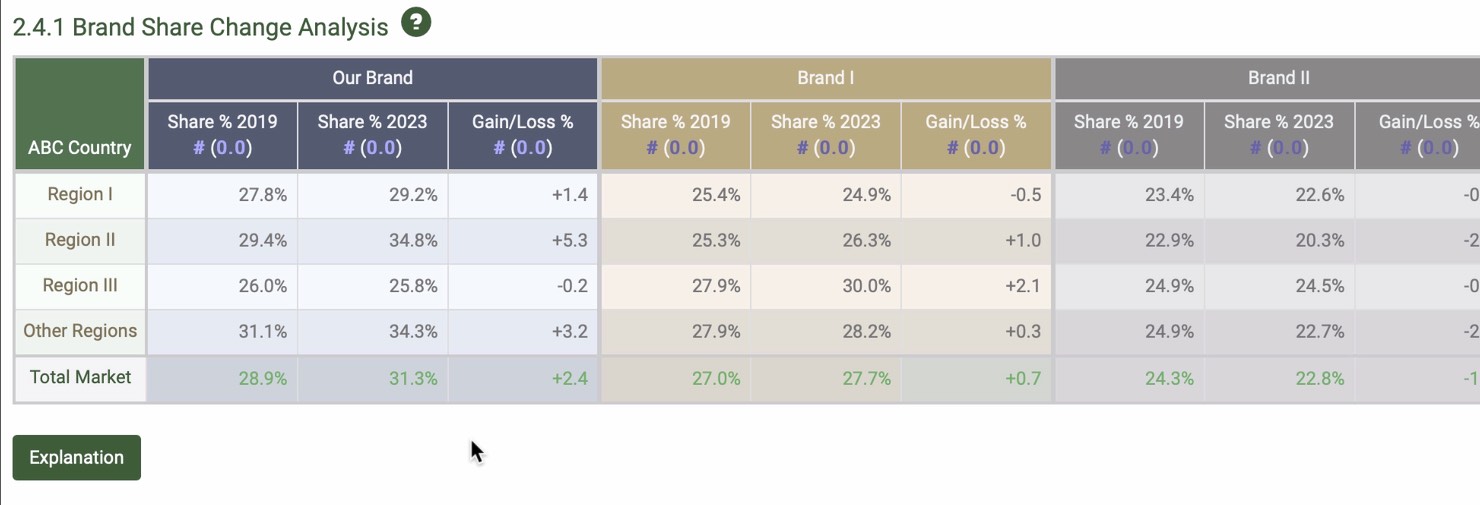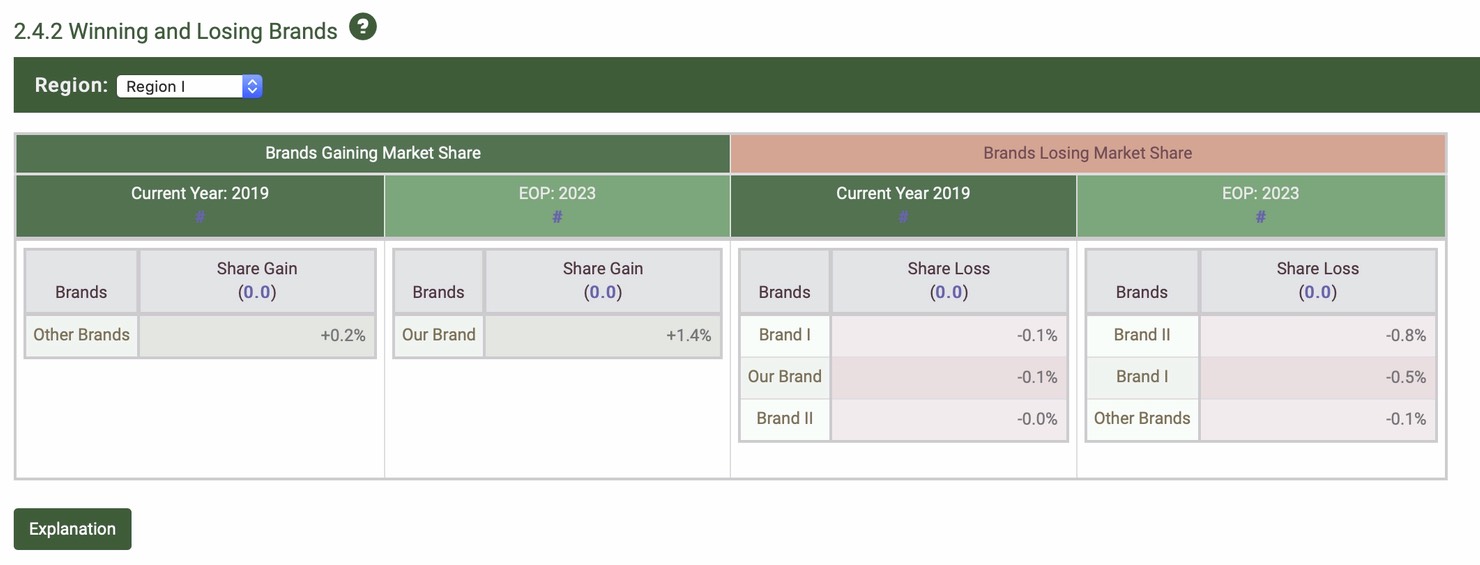The importance of SmartCharts
Having trouble viewing this video? Try the direct link
Transcript:
Welcome to our series on Practical Marketing Planning. Today, we will discuss the essence of the MARFIN’S new and innovative marketing platform: the SmartChart. A thorough understanding of this new concept is essential for developing a comprehensive, well-harmonized and creative marketing plan.
We are all familiar with spreadsheets. Spreadsheets are incredible tools. However, they are only tools. Spreadsheets are only useful if they reveal an insight, if they convey a message, if they give us information we wouldn't have discovered otherwise. They can only do that if they contain meaningful data. Therefore, we need to make them smart.
What is a SmartChart? A SmartChart is a chart that has a predetermined task to perform within a marketing framework.
But how do we make a SmartChart? We do it by defining the information it has to communicate.
In order to define the information that a chart needs to communicate, we first need to have an understanding of the overall project. That is why we developed the MARFIN digital marketing platform. What is the MARFIN digital marketing platform?
The MARFIN platform:
- Contains all the marketing information you need and makes it available at a click.
- Organizes the information in a logical way, following the planning process from A to Z.
- Induces creative thinking by providing descriptions of the major marketing concepts.
- Facilitates developing consistent strategies and combining them in a well-structured marketing plan.
MARFIN accomplishes all this by breaking down the entire planning process in an original way into over 250 SmartCharts and graphs, structured according to the marketing mix.
Functions of a MARFIN SmartChart
The MARFIN SmartCharts have three functions: they serve for data entry, they facilitate analysis, and finally they aid in developing strategies. The structure of each chart and the corresponding specially-designed function buttons make MARFIN unique. These charts are the essence of MARFIN.
Let's see Chart 1.3 as an example.

The first function of a SmartChart is data entry. In the top menu, MARFIN lists the information that needs to be entered in each chart. This is a general list, so it might need adaptation if your business has special characteristics.
Next, by clicking on the question mark (?) at the end of the title of each chart, we access the description of the chart’s objective. It explains the special role of the chart in the marketing planning process and the objective it needs to achieve. By describing the task of a chart, MARFIN actually translates the information into practical applications. This makes MARFIN unique, an entirely new concept in software.
To further understand the chart’s role in the planning process, MARFIN features several function buttons which we can find under each chart:
Forecast
We find the Forecast button under those charts where the marketing tasks involve trend analysis and forecasts of one or more variables, such as market size, brand share, or advertising spending. The MARFIN forecast uses the standard time series methods: moving averages and exponential smoothing. MARFIN is very flexible, though. If your company uses more sophisticated forecasting models, we can easily incorporate them in our platform.
Chart Explanation
Here, the program explains how the chart functions and the data flows. The chart explanation lists the numbers that the program entered from another chart, and identifies the charts the numbers came from. It lists the number that we need to enter in this chart. And finally, here, MARFIN explains how certain values are calculated.
Marketing Tasks
This function was designed to familiarize the user with the basic concepts of marketing and the underlying principles of the MARFIN marketing management system. It describes the marketing theory relevant to the chart, and lists the marketing tasks we need to perform; furthermore, it explains what assumptions and conclusions need to be made. It includes an explanation of the chart’s strategic meaning and how the results of the analysis will affect subsequent charts.
For example, Chart 1.10 is the chart where we develop the final market strategy. All the necessary information is shown in this chart.

The first column indicates the results of our Market Maturity Analysis carried over from Chart 1.9. The next columns show projected sales for the end of the planning period and current sales for reference. The planner's task here is to rank the markets according to their importance to the brand, in the last column.
In the subchart, MARFIN immediately rearranges the regions according to the planner's rank entered in the main chart.

In this subchart, we will make a very important strategic decision: we will have to decide the strategy to follow in each individual market - grow, maintain, harvest, or terminate - and select the appropriate one in the last column.
Assumptions
By clicking on the Assumptions button, we access MARFIN’s text editing capabilities. Here is the place where we record our assumptions and decisions made during the planning process concerning the task that had to be performed in a particular chart. Finally, all our decisions will be combined in to the marketing plan.
Whether we make a forecast, or decide on the strategy to follow in a certain region, we analyze various options and weigh possible threats and opportunities before making our final decisions. This thought process is very important. Unfortunately, it gets easily forgotten. That is why MARFIN designed this interface where we can record this vital information.
We cannot emphasize enough the extreme usefulness of this function. These notes will help refresh our memory down the road. They will also be helpful to monitor the marketplace. If the environment changes, we will need to make adjustments to our plan. MARFIN easily facilitates such adjustments.
Source of Data
This function will also prove to be of great value. It's all too easy to forget where the numbers in a chart came from. An additional benefit of having this space is that here we will also be able to record observations on the quality of the data provided by the various sources. This function is only attached to charts where data is entered, usually, the main chart of a section.
Just like the Assumptions, the Source of Data is also a very practical feature. As time goes by, it is easy to forget where past numbers came from or what our thought process was when our forecasts were made.
Subcharts
Another very useful concept that MARFIN developed is Subcharts. Generally, we enter data in the main chart at the top. The purpose of the subcharts is to take advantage of the power of digital analysis.
MARFIN thus rearranges the data entered in the main chart in several creative ways providing a unique insight into the business, and consequently fine-tuned and better targeted strategies. In addition, we will be able to work with a higher degree of efficiency and a smaller staff.
To demonstrate the importance of this feature let's look at Chart 2.4, which contains the final brand forecasts, our brand's forecast, and the sales forecast of the major competing brands.

Once the final forecast numbers are entered, we can quickly evaluate the market situation at a click.

The first subchart compares the total change in share per brand and region over our forecast period.

The next provides a comparison per brand. It shows which brands are gaining market share and which brands aren't over the forecast period - and by how much.

The third subchart provides a comparison by region. It shows in which regions we have a strong market share and in which we are weak, based on a dynamically calculated average market share for each year.
With all this information available at a click, we will quickly see whether our sales and share objectives are realistic, or if we need to return to previous charts and make new projections.
Graphs
We will get further insight in what’s happening in the market by looking at the data via graphs.

By clicking on the button, we will be able to see the data of the main chart in several different ways. These graphs will show the development of the key values over time or compare them in a specific year according to the selected variables. Rolling over data points will show more detailed values. The graphs are also very versatile. You can hide data sets as needed to help clarify your analysis, for example.
An essential part of the SmartChart is MARFIN's other, unique concept: the SmartDatabase. The SmartDatabase and SmartChart work together to provide the planner with a new and exclusive marketing platform. Together they constitute MARFIN’s creative digital marketing planning platform.
In summary, MARFIN is an entirely new concept in software. It takes you through the planning process step by step. It assists marketing professionals in developing strategies for each element of the marketing mix and then combining them into a business plan.
MARFIN is an interactive system. It does not make any decisions. It only provides the information for the user for them to make proper decisions with data.
MARFIN will leave free rein to your creativity because you are in charge. It is you, not the program, who makes the decisions.
You will find MARFIN not only improves your efficiency and creativity, but it is also a lot of fun to use.